Create, Record and Run the tests
13 Nov 20197 minutes to read
Essential QuickTest Professional lets you test applications with different Syncfusion controls, and allows playback of scripts. This section describes about how to create, record and run the tests in HP QTP/UFT.
Creating a new Test
1) Open QTP by double-clicking the QuickTest Professional icon.
NOTE
The QuickTest Professional – Add-in Manager window is displayed.
2) Select the .NET check box under the Add-in header. This ensures that .NET add-in is installed.
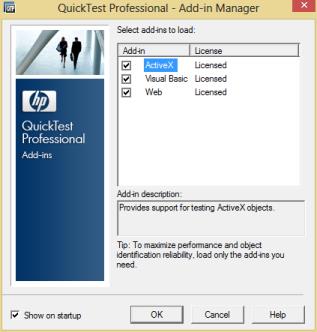
3) Click OK.
NOTE
The QuickTest Professional – [Start Page] window is displayed. There are two tabs, Start Page and Test, in the main pane of the window. The content under the Start Page tab is displayed by default.
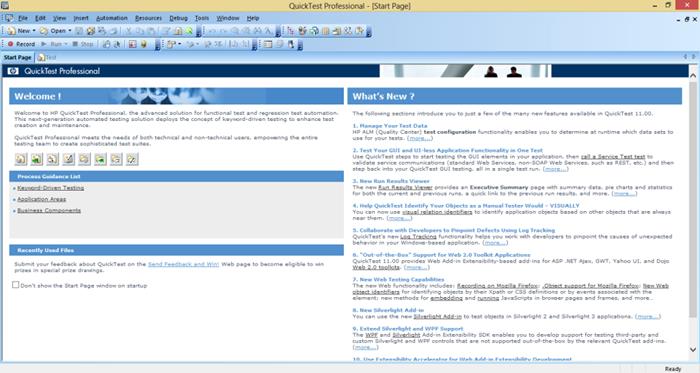
4) Click the New Test icon on the Start Page.
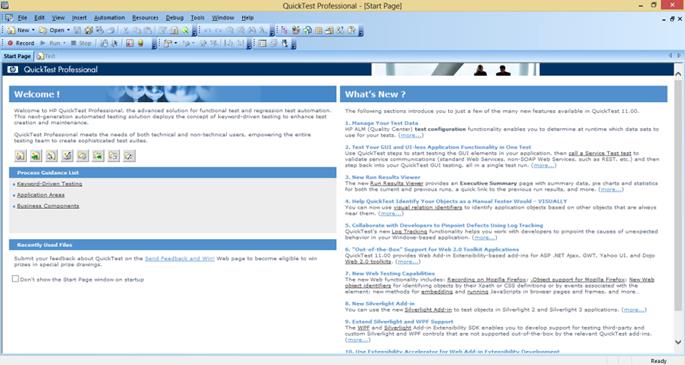
This creates a new test. Alternatively, you can click the Test tab in the main pane of the window or Test sub-menu under the New menu in the Menu bar.
5) Click Record in the toolbar to start the recording.
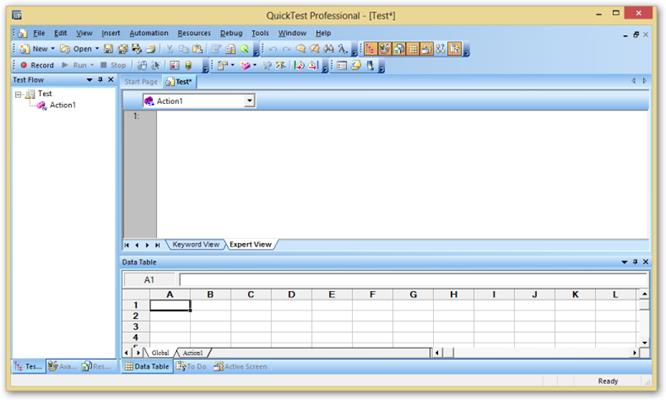
NOTE
A Record and Run Settings dialog box is displayed.
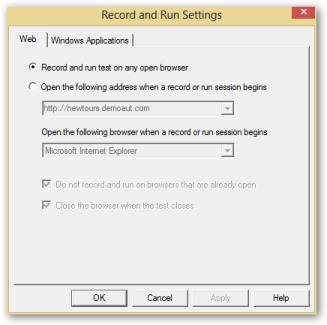
6) Click the Windows Applications tab.
NOTE
The content under the tab is displayed.
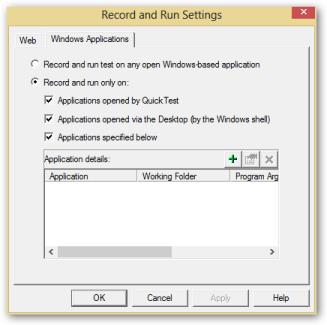
NOTE
The “Record and run only on” option button is selected by default, and the check boxes selected under it ensure that, only the applications opened by QuickTest and added applications are tested.
7) To add an application for testing, click the + button in the Application details: frame as shown in the figure above.
NOTE
The Application Details dialog box is displayed.
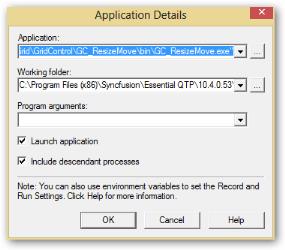
8) Browse and select the path of the application that is to be tested by clicking  for the Application: label.
for the Application: label.
9) Browse and select the path of the working folder by clicking for the Working folder: label.
for the Working folder: label.
NOTE
Selecting the Launch application check box launches the application immediately after clicking OK in the current dialog. The Include descendant processes check box that includes all the processes that are descendant to the current process. Both these check boxes are selected by default.
10) Click OK.
NOTE
The path of the application and working folder are displayed in the Application details frame as shown here.
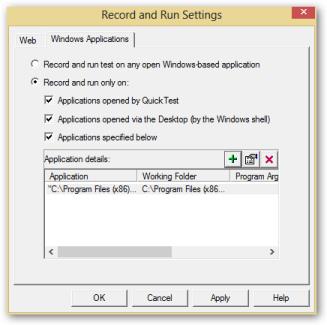
11) Click OK.
NOTE
The recording starts. The application in the given path is opened as shown here.
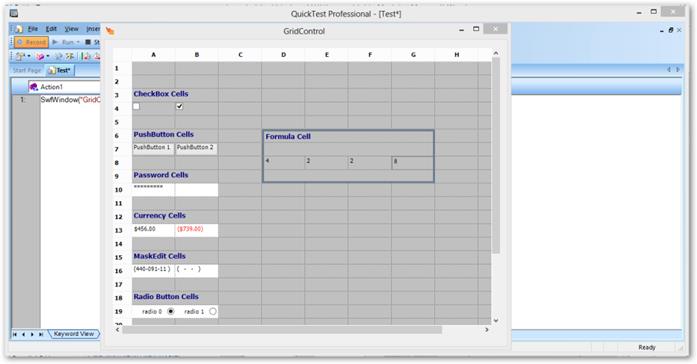
12) Perform required valid user-action in the application.
NOTE
Whenever you perform any action involving the Syncfusion control used in the application, the swfconfig file maps the control to the corresponding assembly.
The assembly renders the correct method names of the Syncfusion namespace that is called respective to the user-actions performed. These method names are then recorded and displayed in the screen behind the running application as shown here.
This is called high-level recording, as the events are recorded with the method names of the Syncfusion namespace after recognizing the Syncfusion control, unlike the low-level recording where the Syncfusion controls are not recognized by QTP and the events are recorded with default method names as shown here
The low-level recording is the default recording done by QTP, when the steps mentioned in the Configuring Essential QuickTest Professional section are not followed. The recording can be stopped by clicking the Stop button in the toolbar.
The process of creating and recording the test is completed.
Running a Test
On recording, all the user-actions performed in the control are just noted with the corresponding method names of the Syncfusion namespace. The errors can be checked while running a test. To run a test, follow the given steps:
1) Click Run in the toolbar.
NOTE
The Run dialog box is displayed. The Results Location tab is highlighted by default.
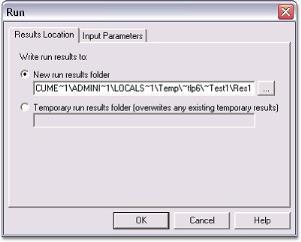
In the Results Location tab, two options are provided,
- New run results folder: Allows the results of the test to be written to the location mentioned in the text box after it.
- Temporary run results folder, overwrites any existing temporary results, allows the results to be stored in the temporary location.
2) Click the required option.
NOTE
Selecting one option renders the other unavailable.
3) Browse and select the required location by clicking the
NOTE
QTP starts the running process; the application containing the recorded Syncfusion control is opened and it shows all the recorded events in a continuous flow one by one. After running the test, it displays the Test [Result_Written_Location] - Test Results dialog box, where the results are summarized as shown here:
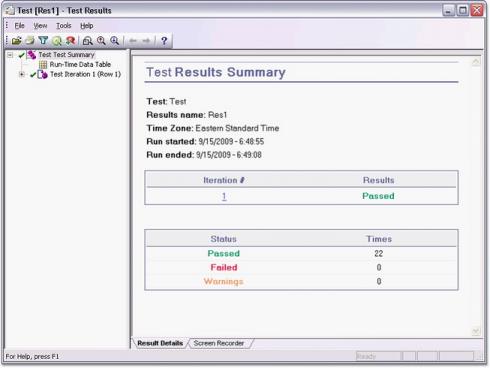
The process of running the test is completed.
To know more about running scripts, refer to the QTP help document.
Editing a Test
A test can be edited in either the Keyword view or in the Expert view. You can switch between these views by selecting the required tab at the bottom left of the QuickTest Professional test screen.
Editing in Expert View
This view is specially provided for the experts in VB script. In the Expert view, the VB scripts are generated while recording. You can also manually write scripts to the existing scripts in this view. So, this view can be used as a tool for managing the testing process in a more controlled manner. You can add scripts to trigger events manually.
The following image shows adding a script line to the Expert View pane.
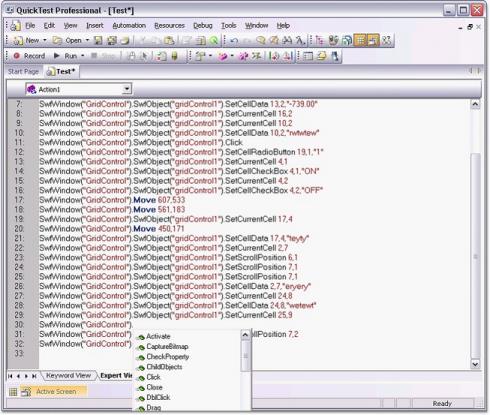
You can run the edited test to check whether the newly added or changed scripts affect the running process by showing the changes in the running application.
NOTE
Sometimes, the newly added or changed script may have an error causing the whole application to fail. In such a case, the Test Results dialog shows the failure as shown here:

For more details on running the test, refer to the previous section.
Editing in Keyword View
The keyword view is meant for those who are not experts in VB scripts. Keyword view contains the controls used, the user-actions, or operations performed, values involved in the operation, and the documentation summary in a table format. The controls used are listed under the Item header in a tree-view format as shown here.

To edit the test in Keyword view, you can perform any of the following actions:
1) You can right-click any of the items listed under the Item header and choose one of the options available in the displayed menu as shown here.
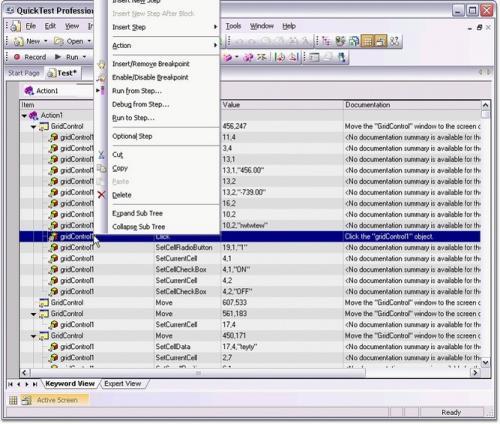
For example, clicking Cut in the menu causes the row representing a user-action to be cut. You can then right-click any other item and click Paste on the menu displayed. This causes the row to be pasted before the right-clicked item.
NOTE
All the items under the Item header are represented as a drop-down list.
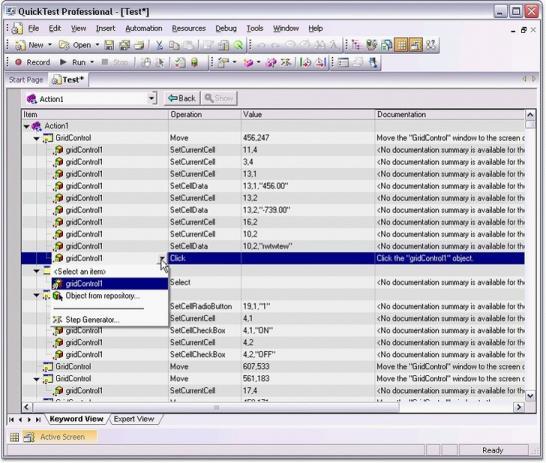
You can then run the edited test.
For more details on running the edited test, refer to Editing on Expert View topic.
Saving a Test
Saving a test is like saving any other document or picture. To save a test, follow the steps:
1) Click the Save button in the toolbar. The Save Test dialog box is displayed.
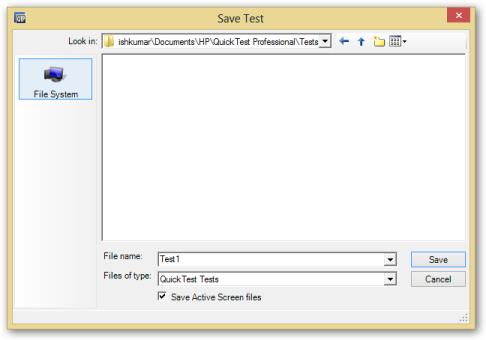
2) Select the location to save the file from the Save in: drop-down list.
3) Type the file name of the file to be saved in the text box adjacent to the File name label.
4) Click Save.
The test is saved.
Running the Saved Test
The tests that have been saved can be replayed later. To run a saved test, follow the steps provided:
1) Click Open on the toolbar.
NOTE
The Open Test dialog box is displayed with a list of saved tests.
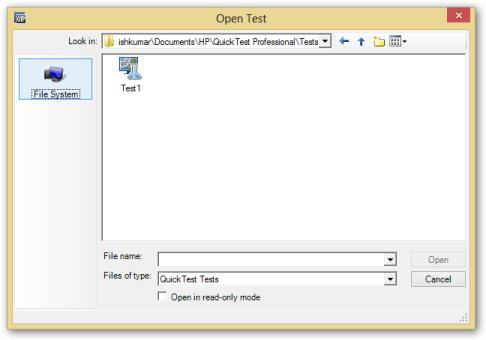
2) Select the required test and click Open.
NOTE
The saved test is opened with its name and the complete path as the name of the window. By default, Expert View of the Test is opened.
The following image shows the mouse pointer pointing towards the path and file displayed as the window name.
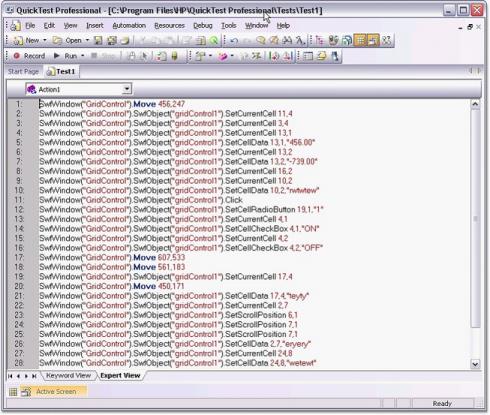
3) Click Run on the toolbar to run the test.
For more details on running the test, refer this document. The process of running a saved test is complete.